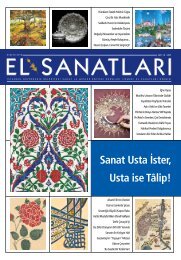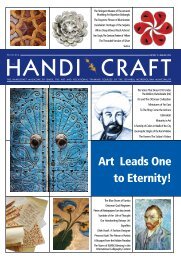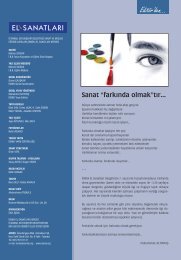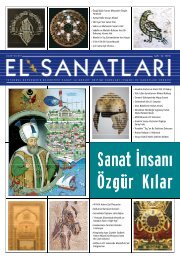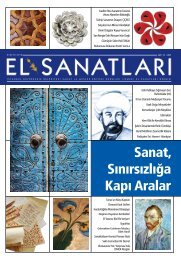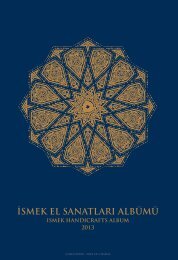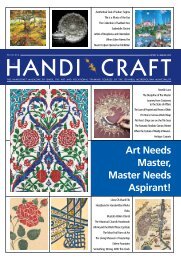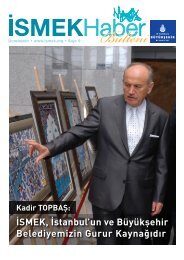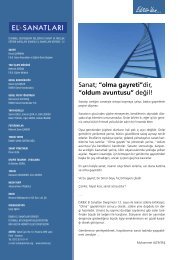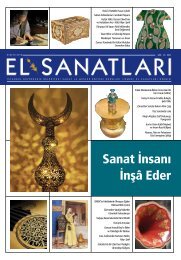Download Link - Ä°SMEK
Download Link - Ä°SMEK
Download Link - Ä°SMEK
Create successful ePaper yourself
Turn your PDF publications into a flip-book with our unique Google optimized e-Paper software.
Rumi patterns. The patterns in the ornament which<br />
was formed by gouging technique are flat surfaced.<br />
Ornaments of same sort are seen in the plinth of the<br />
squinches which provide passage to the dome in front<br />
of the mihrab.<br />
Erzurum Ulu Mosque has reached today without its<br />
authenticity in the period of Saltuqids. The tablet with<br />
the inscription that the mosque was built in 1179 by<br />
Malik Mohammad, son of Izzeddin Saltuk doesn't exist<br />
today. 15 In its plan, it is formed by naves straight to<br />
the mihrab, and it replicates the mosques which have<br />
domes in front of mihrab. There is a wooden dome<br />
now in the place of the large pendentive dome placed<br />
on the coves with moldings. 16 Large kerb around the<br />
muqarnas basket ornamented mihrab niche is engraved<br />
with geometrical patterns in alto-relievo. One<br />
of the two spans on the axis of mihrab in north south<br />
direction is covered with a muqarnas dome. The similarity<br />
between this type of cover and the middle span<br />
in the Yakutiye Madrasa which is an Ilkhanate period<br />
structure in Erzurum indicates that could have been<br />
built in a later period. In this region, it is widely seen<br />
the ribbed and rope-shaped moldings which were different<br />
carving styles of the local master-builders as well<br />
as the architectural features belong to Azerbaijan region.<br />
Especially the cambered molding surfaces were<br />
used mostly in the Eastern Anatolian region. 17<br />
Geometrical dowels on the elevations with thin niches<br />
in Mama Hatun Cupola in Tercan, 18 which was presumably<br />
built in the early 13th century, cohere the traditional<br />
influence. The bays on the muqarnas basket<br />
ornament of the entrance were ornamented geometrically.<br />
A dowel patterned cincture consisting of roundprofiled<br />
bands takes places just below and a cincture<br />
of cufic script with rumi patterns surrounds the floor<br />
below it.<br />
We see the first example of the geometrical compositions<br />
in the Great Seljuk brickwork processed in stone,<br />
which is the Anatolia's local material, on the pediment<br />
of the portal of Kale Mosque (1180) in Divriği. 19 Its<br />
architect comes out as he is Azerbaijani and this ornament<br />
makes sense as the name Master Hasan bin<br />
Firuz the Maraghan was mentioned on its inscription<br />
tablet.<br />
Malik Gazi Tomb in Kemah, 20 which was presumably<br />
built in the early 13th century, shows similarities to<br />
the works in Maragha region by its being a brickwork<br />
Detail from the north portal of<br />
Ulu Mosque in Divrigi



